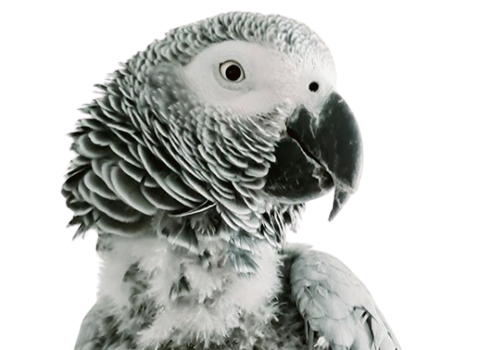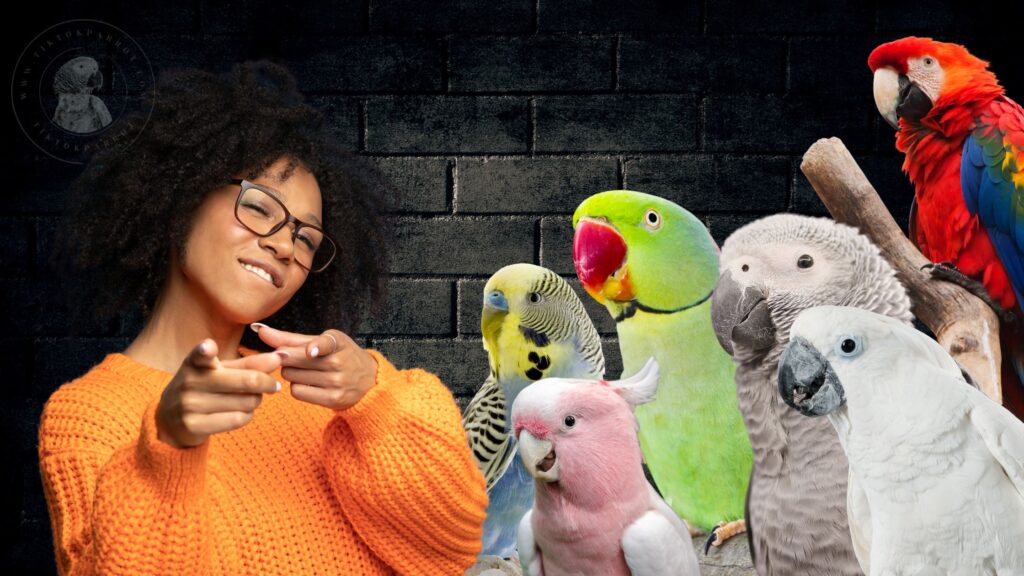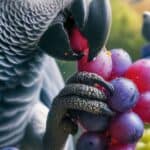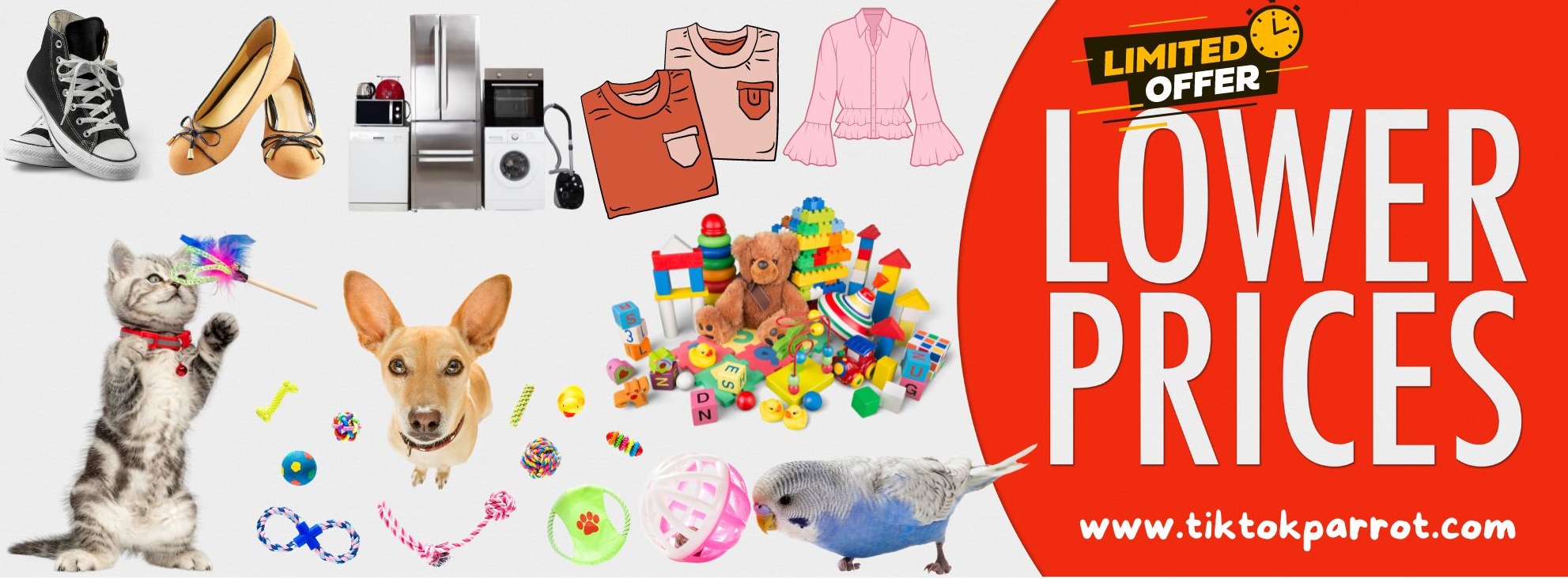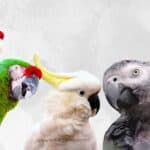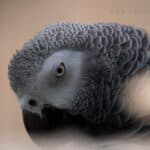Bringing a feathered friend home? Congrats! But before you start talking pirate, there’s some essential info to keep your new parrot chirping happy and healthy. This guide covers everything from the perfect diet (hint: it’s not just seeds!) to choosing the right cage and keeping them entertained.
New parrot? Get it healthy & happy! Learn about proper diet, cage size, training & more. Expert tips for a rewarding bird ownership experience.
The following is a very general guidebook to avian care. It is designed to help owners make sure they are on the “right track” to good parrot ownership. If you are a new owner or unsure about your bird’s well-being, please contact an avian veterinarian for a “birdie checkup” and a lesson on proper bird care.
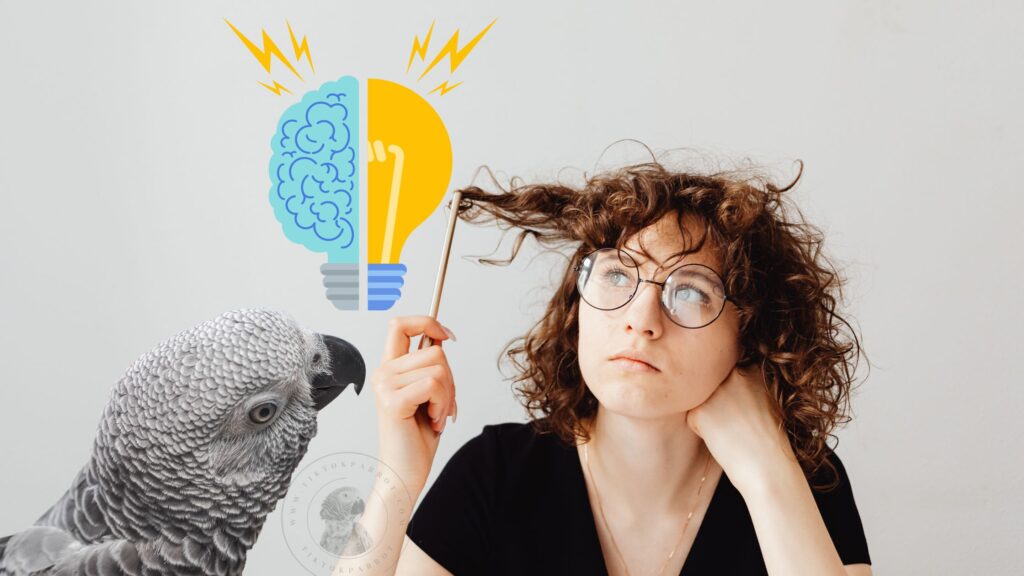
Feeding
Although pet stores are very quick to sell seeds as a complete avian diet, current research on bird care reveals that seeds are a very poor diet indeed. Seeds are very high in fat and protein, but low in nutrition. Although birds love the taste of seeds, these should only comprise a small portion of a bird’s diet. Today, there are many new formulated or “pelleted” diets on the market. These are akin to feeding your dog food kibbles.
Each bite is uniform nutrition based on current thinkings in parrot care. According to many avian veterinarians, a parrot’s diet should consist of 75-80% pellets and 20-25% “table foods.” These table foods should include many dark green or yellow fruits and veggies, and a little bit of pastas, grains, cooked rice, bean, and the like.
A small amount of cooked, skinless chicken, cheese and seeds should be included in the diet to add oil and/or protein. Smaller birds, especially those in an aviary, can have more seeds in their diet, as their lifestyle and high metabolism will burn much more fat. Some parrots, such as Hyacinth Macaws and Black Palm Cockatoos require a diet more stocked with different nuts, as well as fruits, veggies and the like.
The latest concern with food and water in relation to birds is additives. Artificial colors, flavors, preservatives, and other additives may be much worse for birds than for people. Some veterinarians are encouraging the use of organic table foods and pellets low in preservatives, artificial colors and artificial flavors as well as bottled/filtered water for drinking.
Housing
Your bird will spend a lot of time in its cage. Make sure the cage you buy is:
(a)the right size
(b)the right design
(c)safe.
The right size cage must fit your bird and your lifestyle. Imagine the largest cage you can put up with and the most amount of money you can allow yourself to spend. Your bird’s cage should be as large as is safe for the bird. At a minimum, a bird in its cage should be able to fully extend its wings in all directions, and it should not hit its tail on the bars of the cage when on a perch in the middle.
Look for the cage bar spacing (the dead space in between the cage-bars). The bar spacing should not be so large that a bird can squeeze its head through. Usually, giant cages made for macaws have bar spacing that would be unsafe for a smaller bird like a conure. Therefore, this cage would be a bad choice for a small bird.
The right design for your cage would be one that is safe, the right size and something that is easy on your eyes. Don’t pick a cage that you feel is “ugly” or a bad color unless you plan to buy a new one soon. You will have to look at your bird in this cage for years to come!
Finally safety is perhaps the most important issue when buying a cage. Check the bar spacing, as mentioned earlier. Make sure the welding spots are well done, without gaps or sharp edges. Also, be sure the locks on the cage are safe enough to keep clever birds from opening them up!
Toys and Furnishings
Toys are important in keeping birds from becoming bored. However, there are good toys and bad toys out there, so beware. Make sure you buy toys appropriate for you bird’s size. Too big or too small could result in injury for you bird. Make sure the toys come from a reputable manufacturer.
Poorly made toys may have lead sauder which is poisonous to your bird. Also, keep in mind what “stuff” your bird likes to play with when you go to spend $30 on a bird toy. Be sure to rotate the toys weekly, and introduce new toys to your bird’s cage monthly.
Other furnishings in you birds cage may include perches and bowls. Make sure your bird’s perches are in varying widths inside the cage. This will help prevent foot injuries. Also, make sure to keep them free of feces or other deposits. Natural wood perches (commonly made of manzanita or ribbonwood) make a great choice as they are naturally varying in widths. Make sure your natural wood is bird-safe and free from pesticides. Bowls can be found in many varieties.
Usually they are made of plastic, ceramic, or stainless steel. It is important to replace plastic or ceramic bowls when they become old or cracked because they can harbor bacteria. Also, make sure your ceramic bowls are made in the USA, where laws regulate the amount of lead in the paints.
Medical Care
Your bird should see an avian veterinarian at least yearly. Your vet can provide a yearly general physical check that may aid in early detection of a disease. At this time your vet can also answer any questions you might have about your bird’s care, etc.
A comprehensive laboratory workup is recommended every 2-3 years (ideally, this would be yearly, but lab work is often quite costly). This may aide in the early detection of illness or disease. It may include bloodwork, gram stains, fecal checks and throat or cloacal cultures. Your veterinarian can discuss the necessity and cost of each test.
Make sure to see your vet at the first sign of illness in your bird. Birds often hide their illness until they are too sick to hide it anymore. What we might perceive as a minor sickness may in fact be an illness that your pet has been carrying around for days, even weeks.
Finally, make sure the vet you is specializes in birds. This (usually) means that they have taken extra/continuing education courses in avian medicine and have interned with an avian veterinarian. Ask bird-owning friends or your local bird club if they have a recommendation.
Grooming
Grooming of a bird means the upkeep of a bird’s wings, nails and beak. This section contains PRS’s recommendations for grooming, but talk to your veterinarian about your different options.
Wings: PRS recommends a bilateral (two-sided) trim of the first 8-10 flight feathers (except African Greys, trim only the first 6 for these birds). This trim does not show when your birds wings are folded, and it allows just enough “flight” to get your bird to the ground gently if he should choose to jump off a perch, etc. It is perhaps less aesthetic that other trims that leave either the first 2 flight-feathers, or every-other flight feather long.
However, this trim is the safest clip on the market. If your bird is well trimmed, he is far less likely to escape. Remember to keep an eye on the status of trimmed wings. They can grow back quite suddenly, leaving your bird fully-flighted again! Also, when you bring your bird in for a grooming be sure he is in a cage. Many birds have been lost because they traveled cageless on the way to a wing trim!
Nails: Once you have a professional nail trim done on your bird, take a look at the length. This should be the approximate ideal length of your bird’s nails (if the groomer did a good job). Your bird’s nails will need grooming when they become too long, too sharp or twisted. This is certainly something an owner could do themselves.
If you want to do this, make sure to have someone show you how first. Know how to hold the bird so that you and your bird are safe, and be sure to have styptic powder on hand (although, in an emergency, flour will work, too). When trimming nails, be sure to keep an eye on stray toes!
Beak: It is important only to have an avian veterinarian or a professional bird groomer trim a bird’s beak. Your bird’s beak should not require trimming usually unless there is a problem. This problems include malocclusion, disease or injury. If your bird seems to have a beak growth problem, be sure to consult your avian veterinarian.
Bathing and Spraying: It is important that your bird take “baths” or “showers” weekly. This means that the bird get fairly wet with plain water either by means of a bath she takes herself or a misted shower that you give her. This process is good for the skin and feather condition.
In powdery bird such as cockatoos, cockatiels and greys, most of the water will roll off, but it is good for them just the same. Most vets recommend using no additives (oils, etc.) in the water shower. Unless the bird has a problem, their oil balance should be just fine on its own.
Behavior
The intricacies of avian behavior is far too large a subject to discuss here. When dealing with your bird, use only positive reinforcement and patience. Birds do not get much permanent change from punishment. Deal with them realizing that they have intelligence sometimes as much as that of a four-year-old child; however, their emotional state much more reflects the emotions of a two- or three-year-old. They are struggling for independence or dominance over their partner (owner), while at the same time they love and need that partner.
An owner needs to keep a grip on their dominance without punishing, which could ruin the love and trust that is part of the relationship. Bad behaviors such as screaming should be ignored and good behaviors such as talking and playing should be rewarded with cheerful words, a tickle or a tasty treat. It is important to establish “no” and “good” as big words in your bird’s life.
Birds quickly learn the negative connotation of “no” and the happy association with “good.” Behaviors such as biting and destruction should be responded to with a firm, stern “no” and an intense stare (“evil eye”). Remember, too, that each bird is an individual, and methods that work for one bird cause little change in another.
Tailor your bird’s behavior program to your bird’s personality and reactions. For answers to specific bird problems, talk to your avian veterinarian, avian behaviorist or your bird club. Also, read bird magazines, books and literature about bird behavior. Talk to friends who have solved problems. See what worked for other birds and try it on yours.
Finally, keep in mind that punishment-free techniques usually take longer to work, but they have much longer-lasting results.
My Closing Thoughts – Love to share 🙂
As we wrap up this guide, remember that the path to becoming an exceptional parrot parent is paved with love, patience, and a commitment to learning. Your feathered companion depends on you for its health, happiness, and well-being.
With a little planning and patience, you can build a lifelong bond with your feathered companion. This guide is just the beginning! Remember, avian vets are your best resource for personalized advice. So spread your wings, embrace the squawks and cuddles, and get ready for a joyful journey with your new parrot pal!
If you found this blog helpful, It would be great if you could share it with your family and friends who might find it useful as well.
You might like to read these as well 🙂
10 Basic Care Tips for African Grey Parrot Owners
The Importance of a Cage for Your African Grey Parrot
Things you need to know about an African Grey Parrot’s Cage
Beak to Basics: 5 Easy Steps to a Fresh-Smelling Bird Cage
Keeping Track of the Menu: African Grey Parrot Diet Food
Top 10 Toys to Keep Your Parrot Entertained and Engaged
For more useful content about African grey parrots, you can subscribe my site with your email to get notification upon publishing a new blog, the subscribe box you can see on the right side of this page. Also if you get an alert on your web browser while browsing my site, allow it and that will also give you an alert whenever I publish a new blog. 🙂
Stay safe and much love!

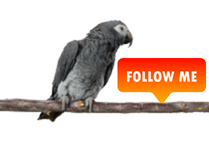
Hey there! 🐾 Looking for top-notch pet supplies or anything on Amazon?
Support our site by shopping on Amazon through our this referral link, it will not cost you extra!
Your purchases on Amazon can help us continue providing valuable content.
Thank you for your support! 🛍️
